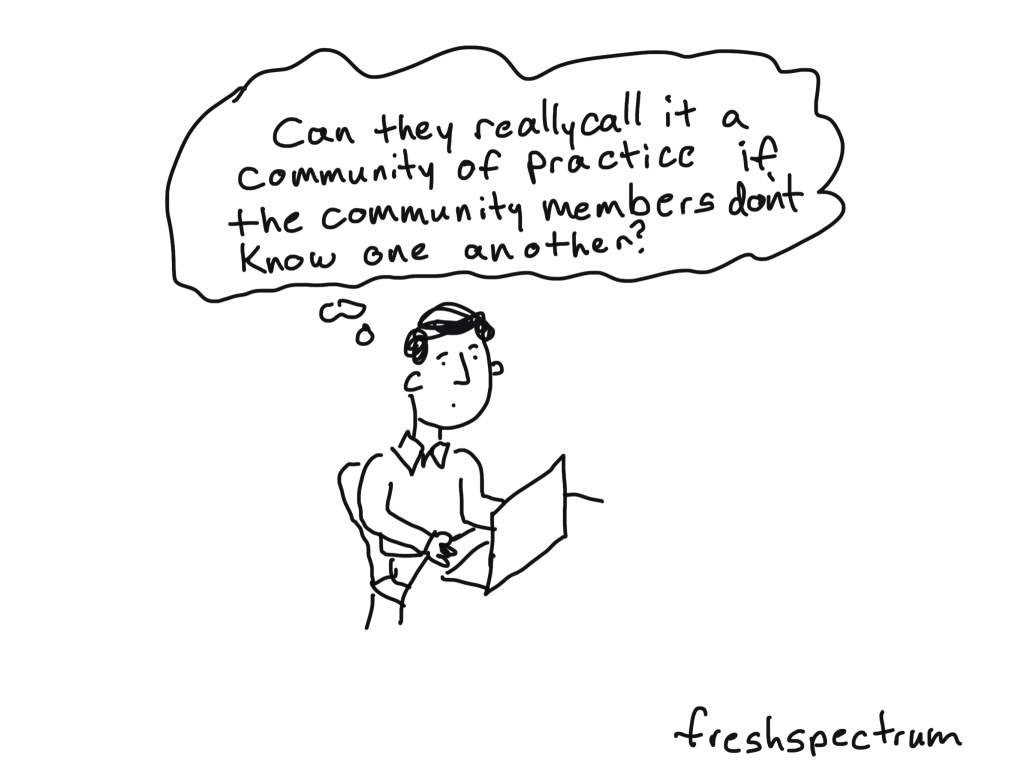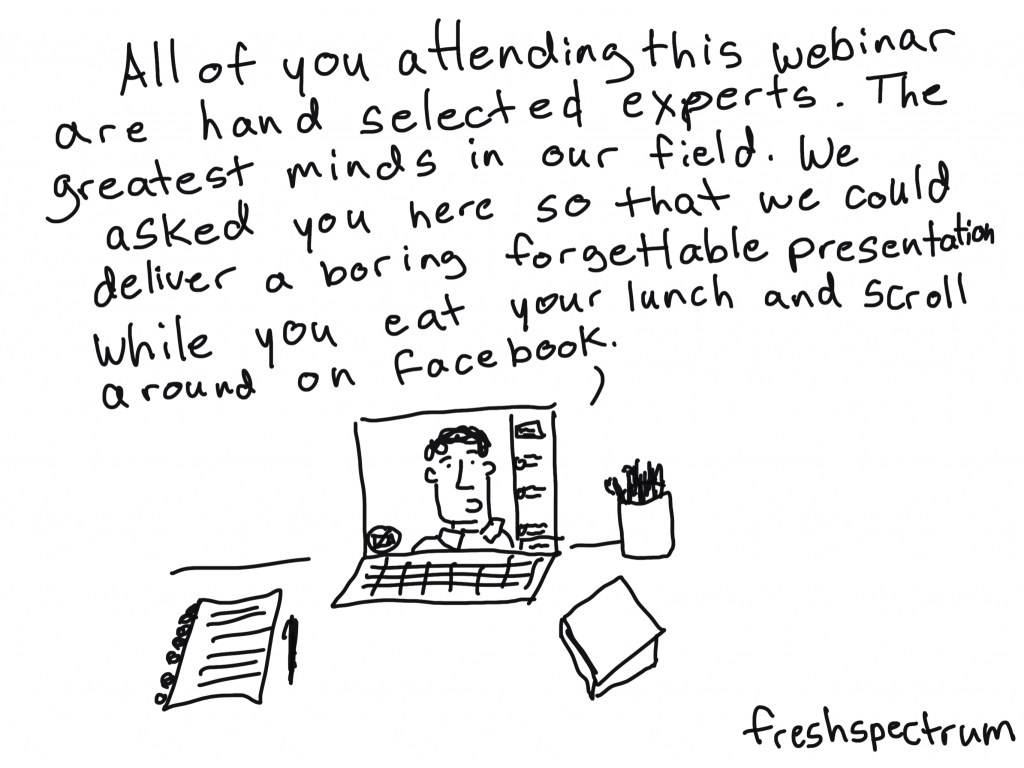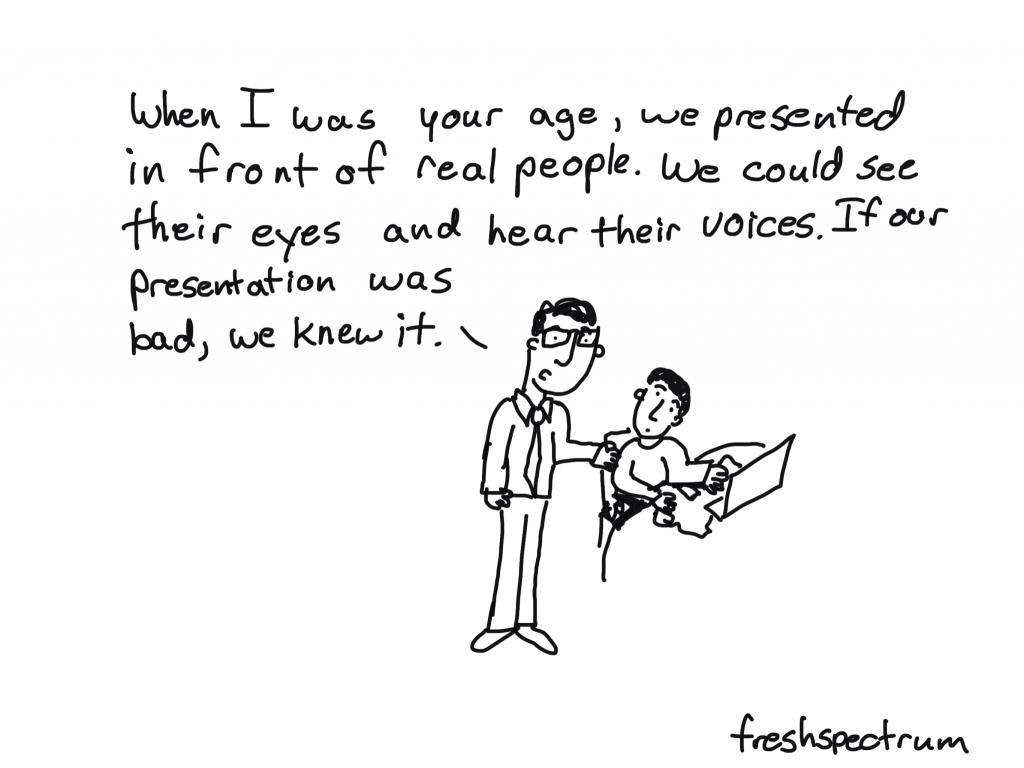Summary: This guide will walk you through five steps for launching a simple but effective virtual community of practice.
Running a successful Community of Practice can take a significant amount of time and effort. That is if you want actual connections to form between community members. But contrary to popular belief, the biggest challenge is not technical. It’s also not about creating the learning content. The significant time and effort required is in the longer term community building.
Bottom line, you can launch a CoP quickly. In this guide I’ll walk you through a set of five basic steps to get you started.

Step 1. Frame your community.
It won’t be an actual community until your people get to know each other. If they already do, great. If not, that will be your job.
Who are your people? What practice do they have in common? Be really specific about who is meant to be in your community, and who is not.
I run an evaluation community of practice for the CDC’s Overdose Data to Action (OD2A) program. The people in the community are the people charged with evaluating the OD2A program. You don’t have to call yourself an evaluator to be in the CoP. This is a known group. While people do come and go a bit, we already have most of their names and emails already. This makes our community framing easier.
If you have to build your community first, start with a Google form. Ultimately you’ll need a list of names and emails (everything else is just icing on the cake).
Step 2. Start with the most basic CoP platform.
I’ve tried just about all the well known community platform things over the last 20 years (Slack, Buddypress, Circle, Discourse, Discord, Ning, Sharepoint, etc.). You know what the best platform is?
An email newsletter and a Zoom account.
That’s it. It’s cheap and effective. If you want to replace the Zoom account with a Teams account or something else, that’s fine. If you have a small group and just want to send regular emails, that’s fine too.
There are exceptions, but most professionals don’t need another website they have to visit. It’s far easier to get them to block an hour off their calendar each month than try to get them in the habit of visiting some kind of web platform they may or may not feel comfortable using.
Step 3. Meet regularly.
I suggest monthly. You can try staggering times if you need to but it’s easier to just have a specific day and time each month (ex. third Wednesday at 2PM eastern).
Things can get complicated quickly, so at the very least, try not to start complicated.

Step 4. Recruit speakers from within your community.
The power of a community is in its members. One of the mistakes people make is in spending a lot of time building a series of interesting lectures with outside experts that they think will be of interest to the community. But that’s not community building, it’s audience serving.
Having your community members deliver the session content is a win win. Not only do you get highly practical instruction (which is what a CoP is designed to offer), you also get an opportunity to showcase individual members.
I like to approach my sessions in blocks. If I have 60 minutes, that’s three 20 minute blocks. This means we can have an intro (first 20) and two talks (15 minutes of talk, 5 minutes of Q&A). Or we can have an intro (first 20), talk (second 20), and some time for breakout groups (third 20).
Step 5. Encourage connection.
When we meet in person there are all sorts of opportunities for people to connect. People might connect by just sitting next to each other at a table or waiting together in the hall. It can help to have someone connect people, but it’s not always essential. Especially if you have a chatty group or a few extroverts.
Now, if you meet virtually, that’s a different story. It’s really easy as a virtual attendee to take on a passive role. Perhaps you just watch the webinar while eating your lunch with your camera off.
It takes a lot more effort to forge connections between community members in a virtual setting. So you have to be intentional. Occasional breakout groups can help a little, but ultimately, the facilitator should play a kind of matchmaker role.

Last Thoughts.
I said at the beginning of this guide that building an effective virtual community of practice takes a lot of time and effort. It also takes a bit of emotional effort.
One of the hardest things about facilitating an online community is that most people instinctively lurk before they participate. It can be unnerving to lead a presentation without being able to see the faces of your audience.
But if you source your expertise from the community, you’ll start to get to know the people involved. I almost always have a 1-on-1 Zoom with potential speakers sometime before the event. Once you get to know the people in the community it becomes easier and easier to find future speakers and connect members with one another.
Want help launching or facilitating your Community of Practice? I help organizations build and run CoPs. You can learn more about my services by visiting my consulting page.

Leave a Reply